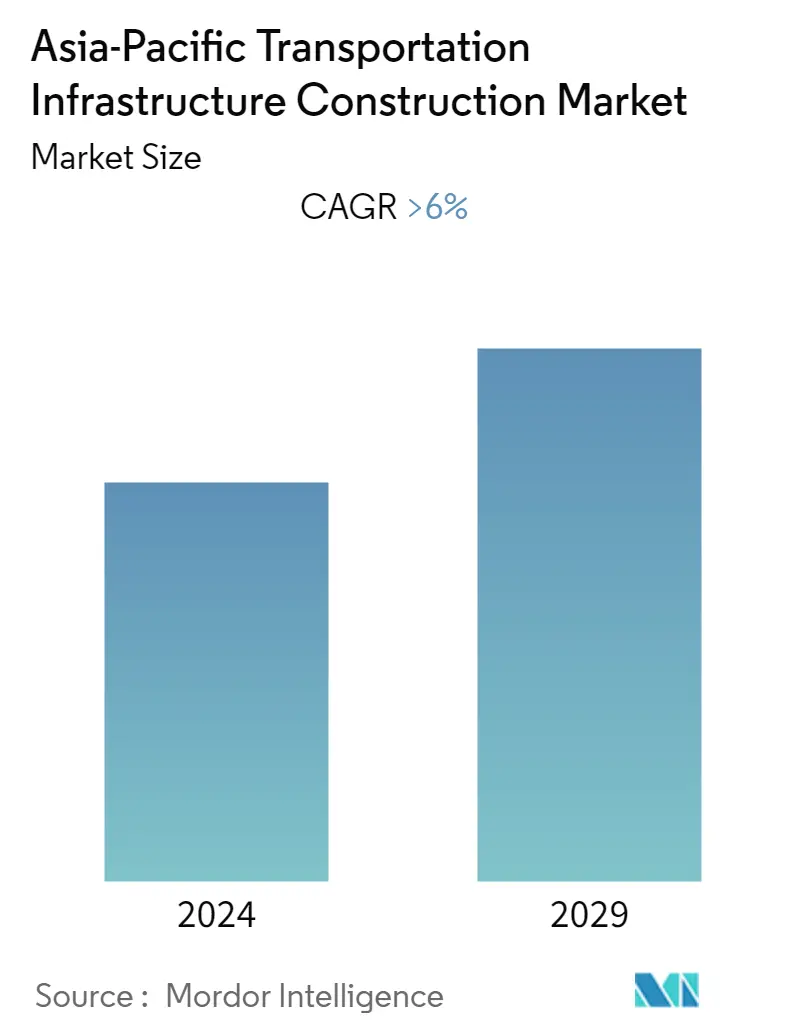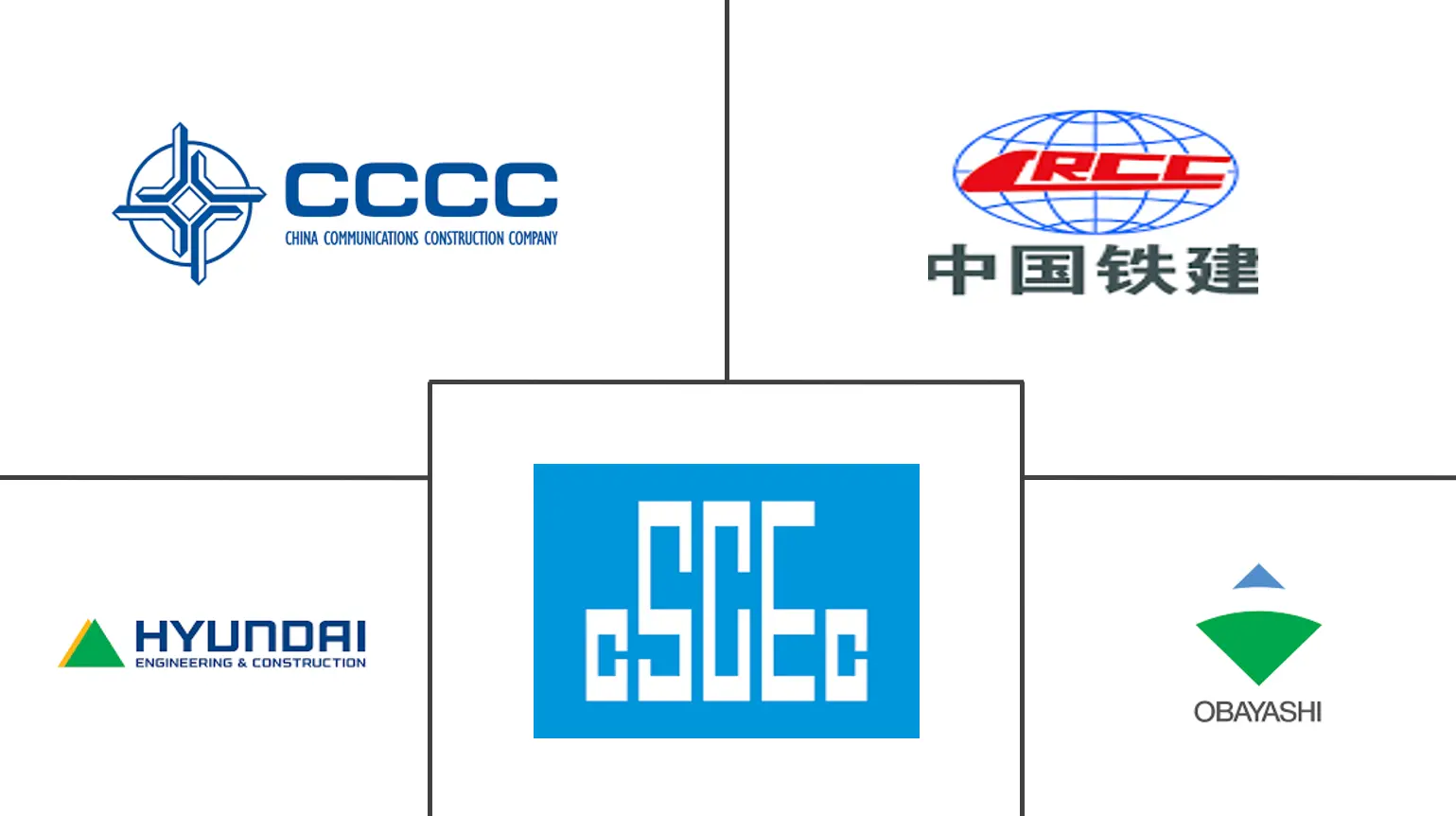Market Size of Asia-Pacific Transportation Infrastructure Construction Industry

| Study Period | 2019 - 2029 |
| Base Year For Estimation | 2023 |
| Forecast Data Period | 2024 - 2029 |
| Historical Data Period | 2019 - 2022 |
| CAGR | > 6.00 % |
| Market Concentration | Low |
Major Players
*Disclaimer: Major Players sorted in no particular order |
Need a report that reflects how COVID-19 has impacted this market and its growth?
Asia-Pacific Transportation Infrastructure Construction Market Analysis
The Asia-Pacific transportation infrastructure construction market is anticipated to register a CAGR of more than 6% over the forecast period. The market is driven by huge investments and government initiatives in transportation infrastructure to boost public mobility and the logistics sector. Furthermore, the market is driven by the advancement and digitalization of transport infrastructure to boost the economy.
- Every year, approximately 44 million people are added to Asia's urban population, which equates to 120,000 people per day. In Asian cities, public transportation is the primary mode of transportation. Construction of urban roads alone is not the solution because it encourages a downward spiral of increased purchases and use of private vehicles, resulting in even more congestion. Infrastructure spending may be the most effective way for governments to stimulate their ailing economies. This is because, first and foremost, infrastructure development has a powerful multiplier effect in terms of increasing economic activity and job creation. This means that the overall impact on economic output is greater than the initial spending injection. Second, infrastructure investment is critical for leaving a positive economic legacy of more resilient, sustainable, and productive growth.
- Singapore has anticipated future transportation challenges with a growing population and over 14 million journeys per day and has planned to ensure that the small city-state meets the needs of the population and that the infrastructure is fit for purpose through innovative use of technology and policy decisions. With this in mind, the Land Transport Authority (LTA) is evaluating solutions to build a transportation system capable of dealing with future challenges as well as developing new solutions to improve the current system. The Land Transport Authority (LTA) Master Plan (LTMP) 2040 report summarizes the LTA's long-term plans to construct an efficient, well-connected, inclusive, and fast land transportation system that will meet Singaporeans' needs and aspirations over the next two decades and beyond. Singapore's ambitious metro expansion continues to provide choice contracts for domestic firms and foreign ones with track records in the city-state.
- Logistics is a critical component of India's economic development. Despite its low ranking, India has an advantage in that the majority of its infrastructure network capacity is being built. The logistics sector has seen rapid growth in recent years, which slowed since COVID-19. The Indian government is investing in the development of dedicated rail freight corridors, which will allow freight trains to run on exclusive tracks. The dedicated freight corridors will eventually lower the cost of moving cargo by utilizing larger capacity electric-powered trains. Overall, the government's recent actions and policies appear to be promising for the sector's development.
- China is showing off its transportation skills by building more highways, trains, waterways, and airports in China, Central Asia, and Europe. The Belt and Road Initiative is divided into two parts: a land route connecting China with Southeast Asia, South Asia, Central Asia, Russia, and Europe; and a sea route connecting China's coastal regions with Southeast and South Asia, the South Pacific, the Middle East, and Eastern Africa all the way to Europe. A more convenient logistics network is also under construction. According to Li and Dai, parcels will be delivered to customers in China in one day, to neighboring countries in two days, and to major cities around the world in three days-at least according to plans drawn up by the Ministry of Transportation.
